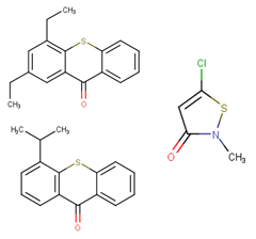Integrated strategy for mutagenicity prediction applied to food contact chemicals
Main Article Content
Abstract
Food contamination due to unintentional leakage of chemicals from food contact materials (FCM) is a source of increasing concern. Since for many of these substances only limited or no toxicological data are available, the development of alternative methodologies to rapidly and cost-efficiently establish the level of safety concern is critical to ensure adequate consumer protection. Computational toxicology methods are considered the most promising solutions to cope with this data gap. In particular, mutagenicity assessment has a particular relevance and is a mandatory requirement for all substances released from plastic FCM, regardless how low migration and exposure are. In the present work, a strategy integrating a number of (Quantitative) Structure Activity Relationship ((Q)SAR) models for Ames mutagenicity predictions is proposed. A list of chemicals representing moieties likely migrating from FCM was selected to test the value of the newly defined strategy and the possibility to combine predictions given by the different algorithms was evaluated. In particular, a scheme to integrate mutagenicity estimations into a single final assessment was developed, resulting in an increased domain of applicability. In most cases, a deeper analysis of experimental data, where available, allowed fixing misclassification errors, highlighting the importance of data curation in the development, validation and application of in silico methods. The high accuracy of the strategy provided the rationale for its application for toxicologically uncharacterized chemicals. Finally, the overall strategy of integration will be automated through its implementation into a freely available software application.
Article Details
Articles are distributed under the terms of the Creative Commons Attribution 4.0 International license (http://creativecommons.org/licenses/by/4.0/), which permits unrestricted use, distribution and reproduction in any medium, provided the original work is appropriately cited (CC-BY). Copyright on any article in ALTEX is retained by the author(s).


